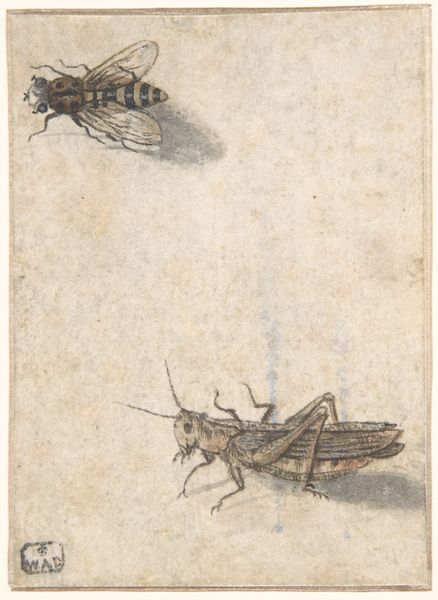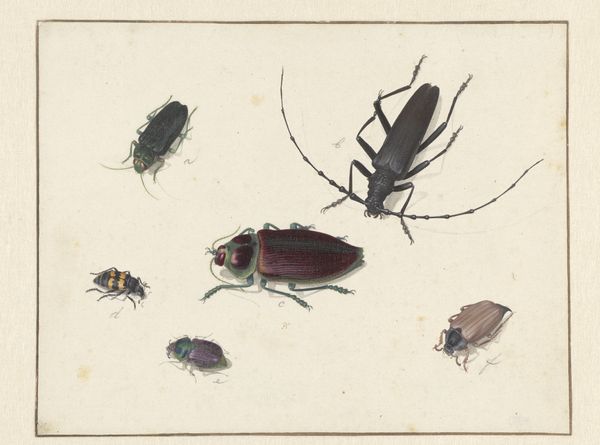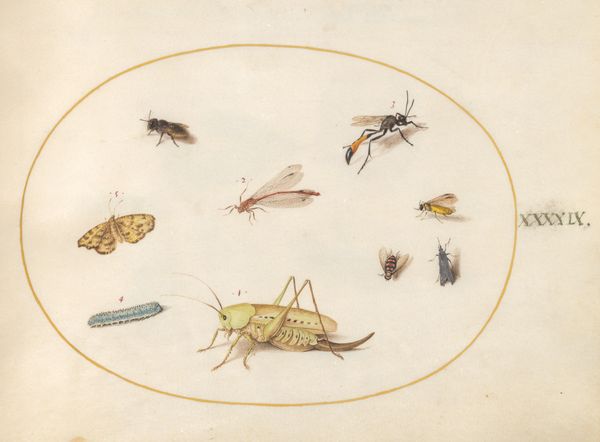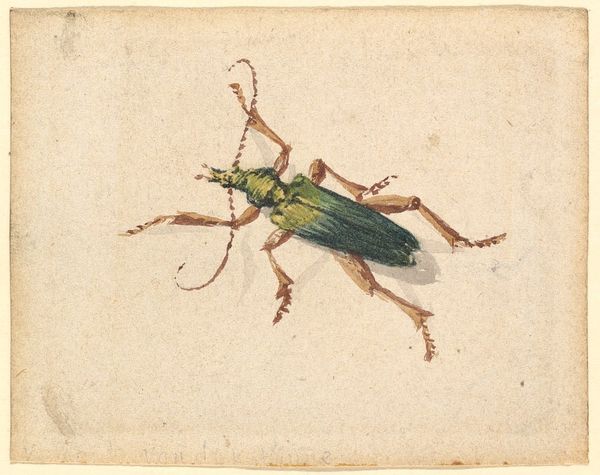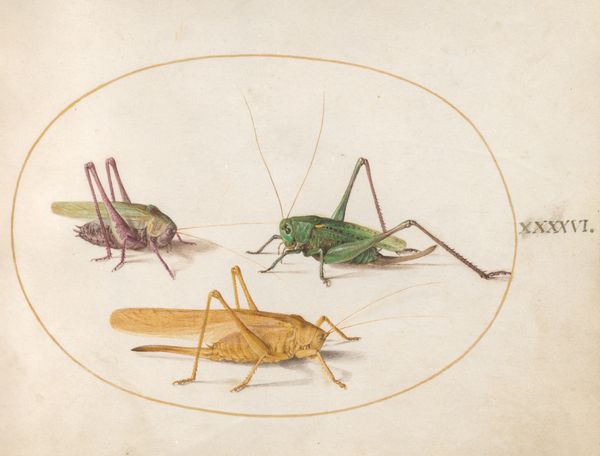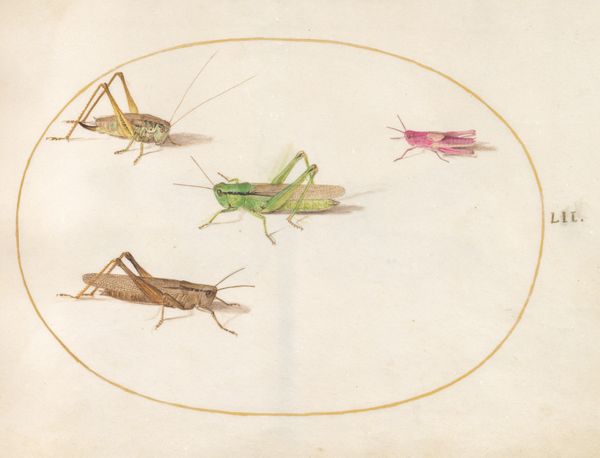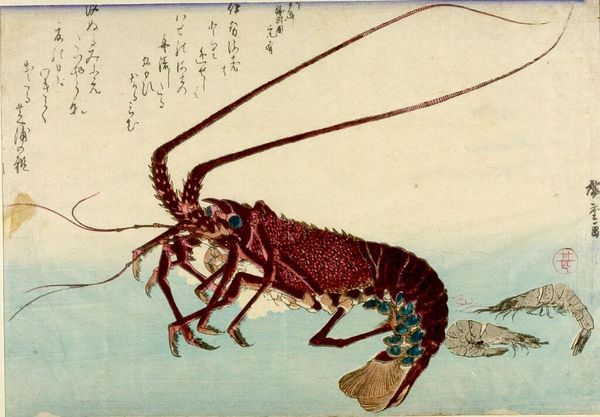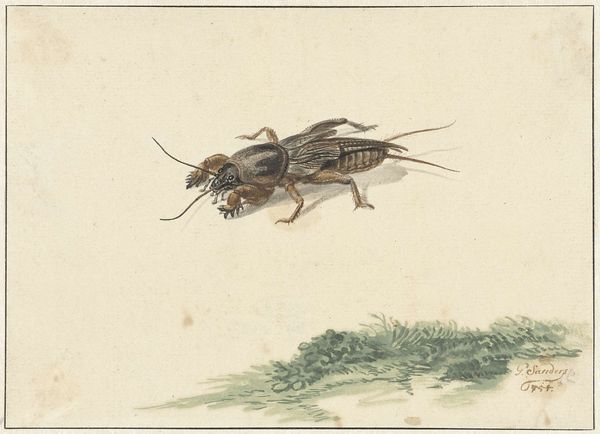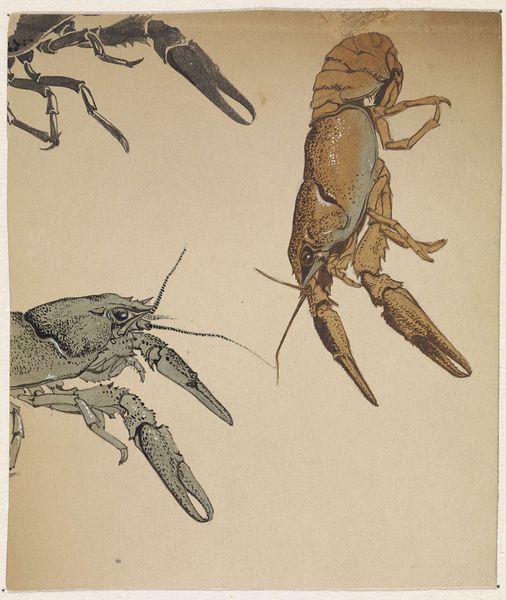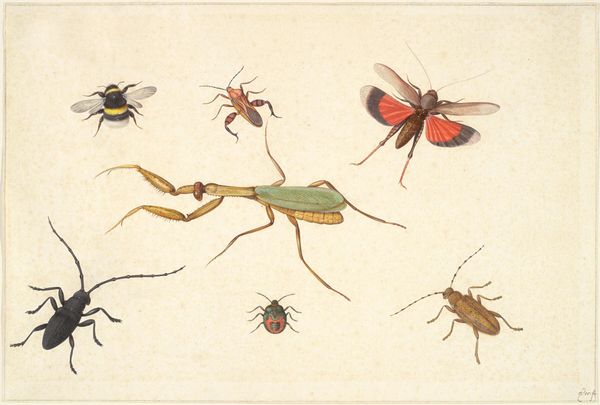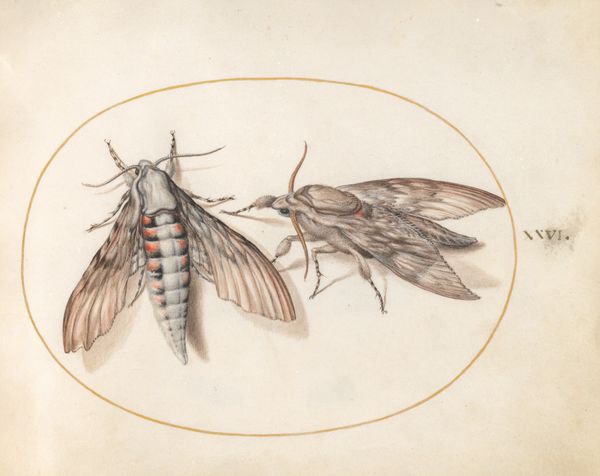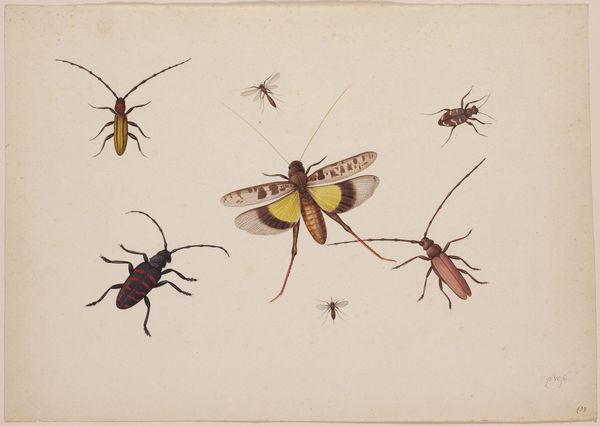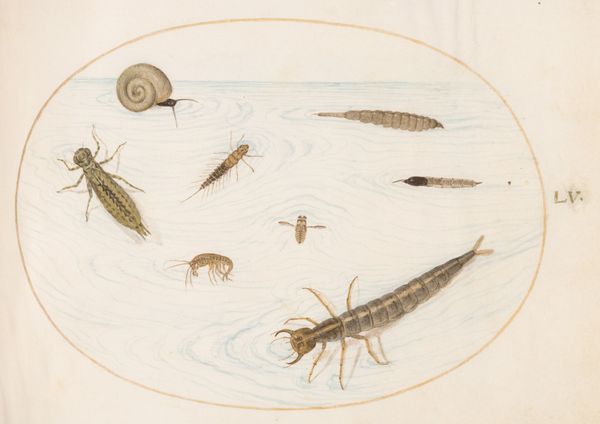
A Great Green Bush Cricket (Tettigorica viridissima Linneaeus), A Clioniona Spider, and a Beetle 1600 - 1700
0:00
0:00
drawing, print, paper, watercolor, ink
#
portrait
#
drawing
#
water colours
# print
#
landscape
#
figuration
#
paper
#
watercolor
#
ink
#
coloured pencil
#
ancient-mediterranean
#
naturalism
Dimensions: sheet: 4 3/4 x 6 11/16 in. (12 x 17 cm)
Copyright: Public Domain
Curator: This detailed work, simply titled "A Great Green Bush Cricket (Tettigorica viridissima Linneaeus), A Clioniona Spider, and a Beetle," was rendered anonymously sometime between 1600 and 1700. It resides here with us at the Metropolitan Museum of Art and showcases a vibrant study in naturalism using ink and watercolors on paper. Editor: It's striking how these meticulously observed insects float on what is otherwise a blank, undefined space. It lends an almost ethereal quality, even though the creatures themselves are so earthly. Curator: Absolutely, that tension is critical. While appearing as a simple depiction of insects, we must also consider the historical context. Works such as these served not just as documentation but also functioned within power structures of exploration and colonization. The capturing and classification of nature were inherently tied to asserting dominance. Editor: The delicate brushstrokes that define the bodies, legs, and antennae seem less concerned with scientific accuracy, and more engaged in presenting form in precise arrangements within the pictorial space. Consider how the placement of each insect dictates eye movement across the page. Curator: And within these naturalistic depictions, hierarchies exist. The bush cricket, rendered in such impressive scale, immediately commands our attention, doesn’t it? Note its relation to the tiny spider beside it—a symbolic, perhaps even unconscious reflection, of contemporary societal structures with certain bodies occupying a privileged position of visibility and dominance. Editor: Yet all these elements function within a clear pictorial logic; line, color, texture, and volume act in relation to each other. It also has something to do with negative space. Curator: A fascinating tension, and further informs the socio-political dynamics it unwittingly reflects, in my view. What looks at first glance like a straightforward representation becomes loaded with historical meaning and echoes of power. Editor: A small study that actually encourages close, sustained looking... fascinating regardless of its historical position. Curator: Indeed, an encounter that bridges historical understanding with enduring aesthetic qualities.
Comments
No comments
Be the first to comment and join the conversation on the ultimate creative platform.
